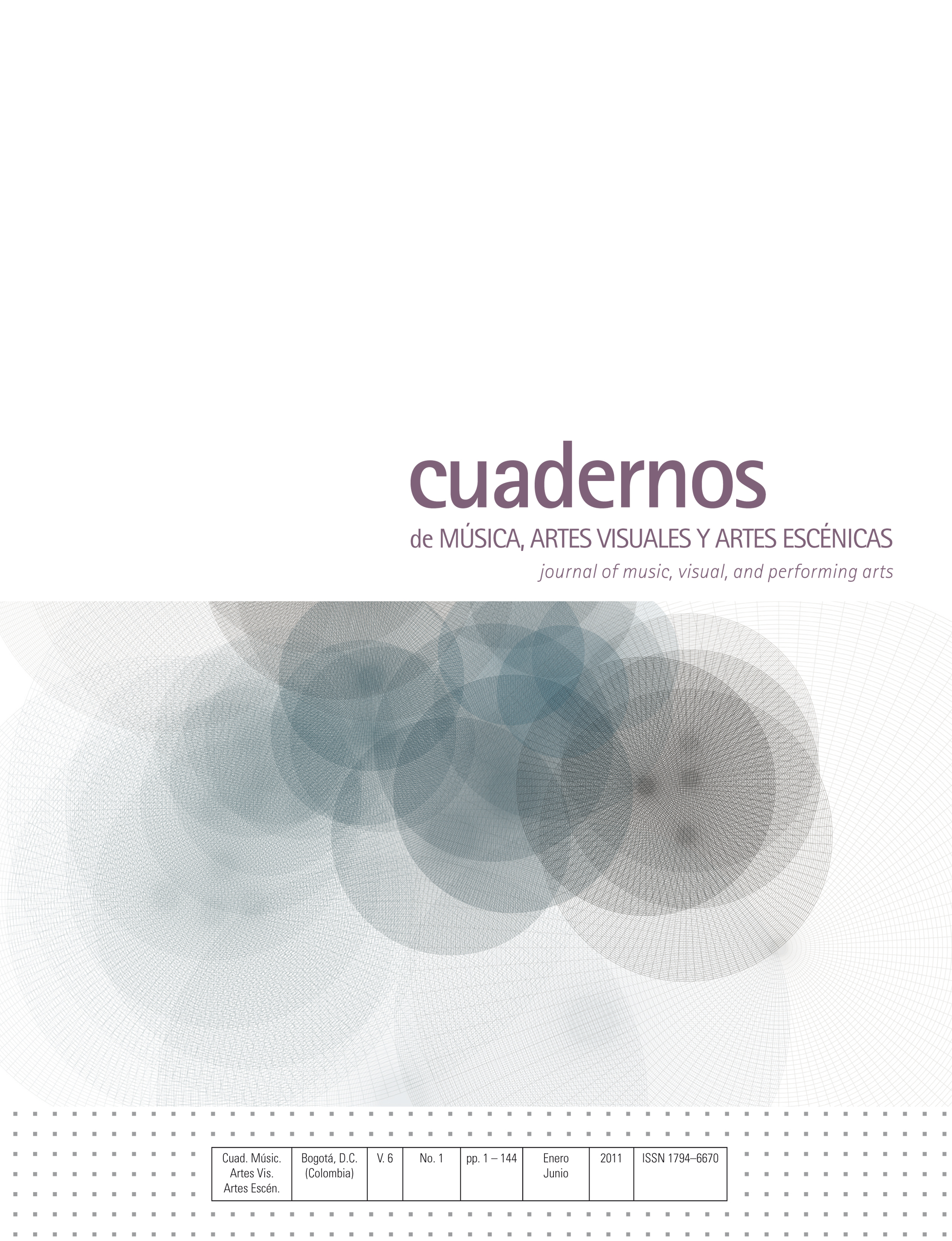Abstract
Desde las representaciones pictóricas y relatos de la antigüedad, hasta las manifestacionesartísticas multimediáticas contemporáneas, las superficies reflectantes y sus reflejos han sidopartícipes en diversos tipos de manifestaciones artísticas no sólo como presencia temática, sinotambién como forma o medio para representar una realidad específica. Poseedores de gransimbolismo, los espejos son ejemplo de la fascinación por los fenómenos físicos naturales y suimpacto en el ser humano para la construcción de ideas y conceptos que van más allá de lo perceptivo.El texto hace un recorrido que ejemplifica y reflexiona sobre algunas de estas concepciones,mostrando las diversas representaciones pictóricas de las diversas alegorías del espejo ysu influencia en el significado de las imágenes y el empleo directo del espejo en la construccióndel contenido artístico, pasando por los posibles espacios de interacción y las paradojas del espejohasta llegar a sus posibles aplicaciones en el diseño de interacción.This journal is registered under a Creative Commons Attribution 4.0 International Public License. Thus, this work may be reproduced, distributed, and publicly shared in digital format, as long as the names of the authors and Pontificia Universidad Javeriana are acknowledged. Others are allowed to quote, adapt, transform, auto-archive, republish, and create based on this material, for any purpose, provided the authorship is duly acknowledged, a link to the original work is provided, and it is specified if changes have been made. Pontificia Universidad Javeriana does not hold the rights of published works and the authors are solely responsible for the contents of their works; they keep the moral, intellectual, privacy, and publicity rights.
Approving the intervention of the work (review, copy-editing, translation, layout) and the following outreach, are granted through an use license and not through an assignment of rights. This means the journal and Pontificia Universidad Javeriana cannot be held responsible for any ethical malpractice by the authors. As a consequence of the protection granted by the use license, the journal is able to publish retractions or to correct information already published. Publishing contents in this journal does not generate royalties for contributors.


